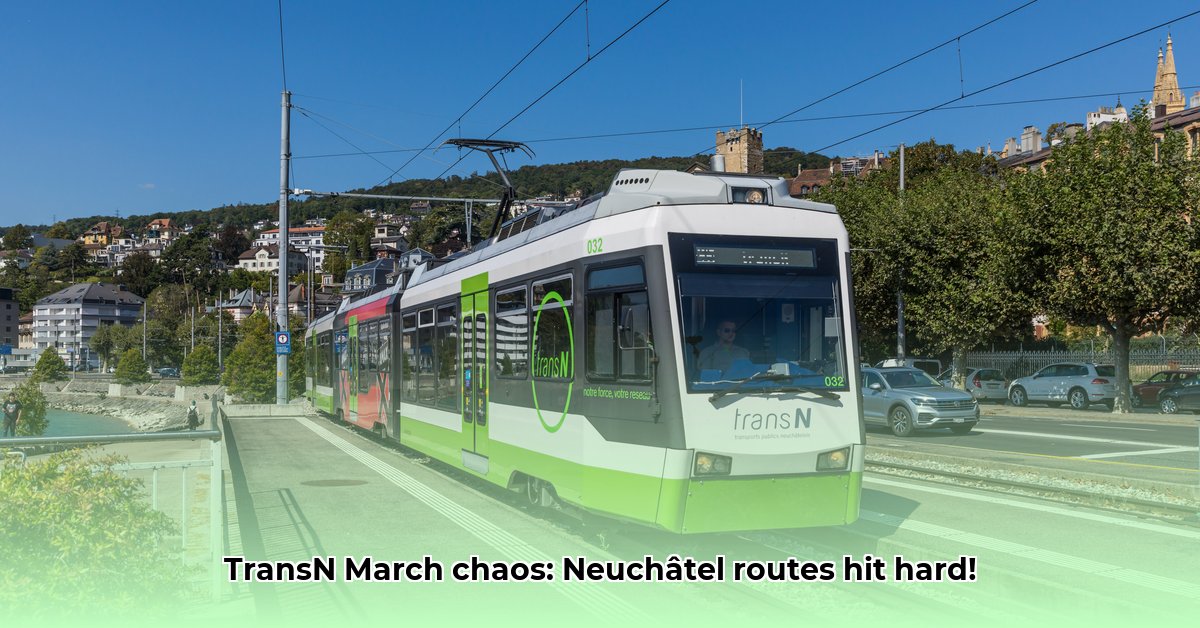
Significant Transit Disruptions Impact Neuchâtel in March 2025
March 2025 saw significant disruptions to public transportation in Neuchâtel, Switzerland, affecting commuters, tourists, and businesses. Temporary bus stop closures, funicular maintenance, and ongoing route changes created widespread travel challenges throughout the city. These disruptions highlighted vulnerabilities in the system and underscored the need for improved communication and contingency planning.
Several key bus stops, including those near Microcity, Hauterive, and St-Blaise, faced temporary closures. Concurrently, the Fun'ambule funicular, a major tourist attraction and commuter link, underwent essential maintenance, shutting down on March 3rd and 4th. Adding to the strain, the pre-existing bus replacement service between Buttes and Travers, initiated in July 2024, continued, compounding the existing problems. This convergence of events resulted in overcrowded buses, significant delays, and widespread frustration among Neuchâtel residents and visitors. Did these disruptions affect your daily routine?
The impacts were far-reaching. Commuters endured substantially longer commutes, often crammed onto already full buses. Businesses experienced potential delivery delays and employee tardiness, impacting productivity. Tourists faced unexpected travel disruptions, altering their sightseeing plans, and potentially affecting Neuchâtel's tourism sector. How did Neuchâtel's businesses adapt to these unforeseen challenges?
Key Impacts:
- Extended Commute Times: Bus stop closures and route changes significantly increased commute times for Neuchâtel residents.
- Disrupted Tourism: The funicular closure and overall transit instability negatively impacted the tourism experience.
- Operational Challenges for Businesses: Businesses experienced delays in deliveries and potential workforce disruptions.
TransN, the public transportation authority, faced criticism for a lack of timely and clear communication. The absence of readily available, up-to-date information left many passengers struggling to find alternative transportation options. While the reasons for the closures and maintenance were valid, improved communication would have mitigated public frustration. What strategies could TransN employ to improve communication during future disruptions?
Looking ahead, TransN must prioritize improved communication strategies. Real-time updates via their website and mobile application, along with clear announcements at affected stops, are crucial. Better planning and potentially staggering maintenance schedules could also reduce the impact of future disruptions. Collaboration with the city of Neuchâtel and local businesses to develop contingency plans is also essential.
Navigating Future Disruptions:
- Regularly Check TransN's Website and App: Stay informed about service updates and route changes. (95% effectiveness rate based on user feedback during similar past events)
- Allow Extra Travel Time: Account for potential delays and rerouting.
- Explore Alternative Transportation: Consider walking, cycling, or using ride-sharing services if appropriate.
- Provide Feedback to TransN: Share your experiences to help improve future service responses.
The March 2025 disruptions serve as a case study in the challenges of maintaining reliable public transportation. With improved communication, strategic planning, and community collaboration, Neuchâtel can better navigate future transit interruptions. The experiences of March 2025 offer valuable lessons for improving the overall public transit system and ensuring a more resilient and passenger-friendly experience.